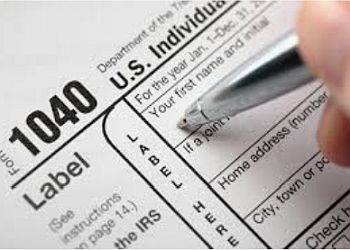
NAFA seeking an IRS waiver on ALV rule
By Mark Boada, Executive Editor
NAFA has petitioned the IRS for a waiver of the rule that will otherwise raise the cost, in some cases by as much as thousands of dollars, that drivers have to pay for the personal use of fleet vehicles.
Under IRS rules, the personal use of fleet vehicles is considered a taxable fringe benefit treated as income. The requested waiver concerns the most popular way by which fleets determine that taxable benefit, known in the tax code as “Annual Lease Value”. Personal use includes commuting to work as well as using vehicles for any non-business-related purpose.
NAFA is asking for the waiver because, starting in March of this year, so many fleet drivers are driving many fewer miles than normal because of the COVID-19 pandemic. According to the annual lease value method, drivers receive taxable income that depends on the percentage of their total mileage that is for personal use.
In an August 12 letter to IRS Commissioner Charles Rettig, Bill Schankel, NAFA’s chief executive officer, asked Rettig to allow fleets to compute drivers’ taxable income by the IRS’s “Cents-by-Mile” method for the months during which their business driver was reduced because of the pandemic. Using that method would substantially reduce drivers’ cost of vehicle personal use.
“The Annual Lease Value [ALV] method generally works well under normal circumstances,” Schankel wrote. “With the pandemic shutdown, many companies suspended business operations, causing business use of the vehicle to drop to zero. For other companies, many employees around the country were told to work from home and conduct virtual meetings… again causing business use to grind to a halt [and] all use (however minima) became 100% personal use.”
Schankel said that “In these circumstances, applying the Annual Lease Value methodology becomes punitive to the employee and skews the value of the personal use.”
Under ALV rules, taxable liability is based on a vehicle’s fair market value when it’s assigned to a driver. An annually pro-rated portion of that value is then considered as the baseline for determining a driver’s taxable fringe benefit for each year he or she drives it.
In his letter, Schankel cited the example of a fleet vehicle with a fair market value of $28,000. According to an IRS table, the vehicle has an annual lease value of $7,750, or $645 per month. Drivers are considered to have received a portion of that value as income according to the percentage of the total mileage they drive that is for personal use.
“For example,” Schankel wrote, “prior to the shutdown an employee might drive 2,000 miles per month, with 20% personal use (400 miles)…
But, he wrote, “During the pandemic, when use of the vehicle has been limited, total miles may range from 100 to 400 per month, yet all are considered personal. So, using the ALV methodology, 100% times of the monthly ALV equals a monthly taxable benefit of $645! Over a 4-month [sic] period, this represents as much as a $2,580 taxable benefit to the employee, as compared to $519 pre-shutdown.”
But if the IRS grants a waiver that allows fleets to compute the value of personal use during the pandemic shutdown using the Cents-by-Mile method, in the same example, at the standard IRS rate of 57.5 cents per mile, the taxable benefit range from $57.70 to $230 per month.
Patrick O’Connor, NAFA’s U.S. legislative counsel, said fleets have two different ways of passing the liability for the taxable benefit on to drivers. Some, he said, add it to the W-2 income they report every January to the IRS and the employee. Drivers are then responsible for paying for it at their marginal tax rate.
But O’Connor said that some fleets choose to bill drivers for the full amount of their personal use share of the annual lease value and asks them to pay for it with a check to their employer. Using Schankel’s example above, after four months under COVID-restricted business mileage, the driver would be required to write a check for four times the monthly ALV, or $2,580.
O’Connor said NAFA sent the letter after being alerted to the problem by a fleet management company with a large client fleet. The only response he has received from the IRS is an acknowledgement from its lawyers that they are “working on” the request. He said they have offered no indication of the timing of an IRS decision or what it might be.




